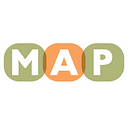Resources for 7th Annual Bisexual Health Awareness Month
Bisexual people make up more than half of the LGBTQ community, but receive minimal support and funding to tackle the major physical, emotional, & social health disparities they face at higher rates than their lesbian and gay peers — all pointing toward an urgent need to bring awareness to this oftentimes invisible population within the larger LGBTQ community.
Help MAP and our colleagues at the Bisexual Resource Center raise awareness this Bisexual Health Awareness Month (#BiHealthMonth). Now in its 7th year, #BiHealthMonth emphasizes the bisexual community’s resilience in the face of significant disparities. Because bisexual people are frequently swept into the greater lesbian, gay, and bisexual (LGB) community, their specific disparities are all too overlooked within data about the whole community.
To help raise awareness about the unique challenges facing the bisexual community and their resilience, MAP has a number of resources that highlight why #BiHealthMonth is vital, including:
- Invisible Majority: The Disparities Facing Bisexual People and How to Remedy Them: Released in September 2016, this report found that bisexual people face discrimination and stigma both from the LGBTQ community and from non-LGBTQ people. This creates myriad disparities for bisexual people including economic insecurity, increased violence, and poorer health.
- A Closer Look: Bisexual Older Adults: This report highlights how the challenges facing LGBTQ older adults are sometime compounded for bisexual older adults, including social isolation and invisibility, economic security, and poorer health outcomes.
- A Closer Look: Bisexual Transgender People: This report analyzes data from the U.S. Transgender Survey, conducted by the National Center for Transgender Equality, and offers recommendations for remedying the disparities faced by bisexual transgender people.
- Infographic: LGBT People with Disabilities: This infographic provides a short summary of what we know about LGBTQ people with disabilities in the United States, including 36% of bisexual women and 40% of bisexual men.
- Infographic: La Bisexualidad en Cifras: This infographic in Spanish features data on bisexual adults.
TAKE ACTION
Be sure to join the conversation on social media! Throughout the month of March, the campaign will run on the Bisexual Resource Center’s Twitter at @BRC_Central using the hashtag #BiHealthMonth. MAP will also be elevating resources and content on Facebook, Twitter, and Instagram.
To learn more about Bisexual Health Awareness Month, visit:
www.bihealthmonth.org/2020-campaign
